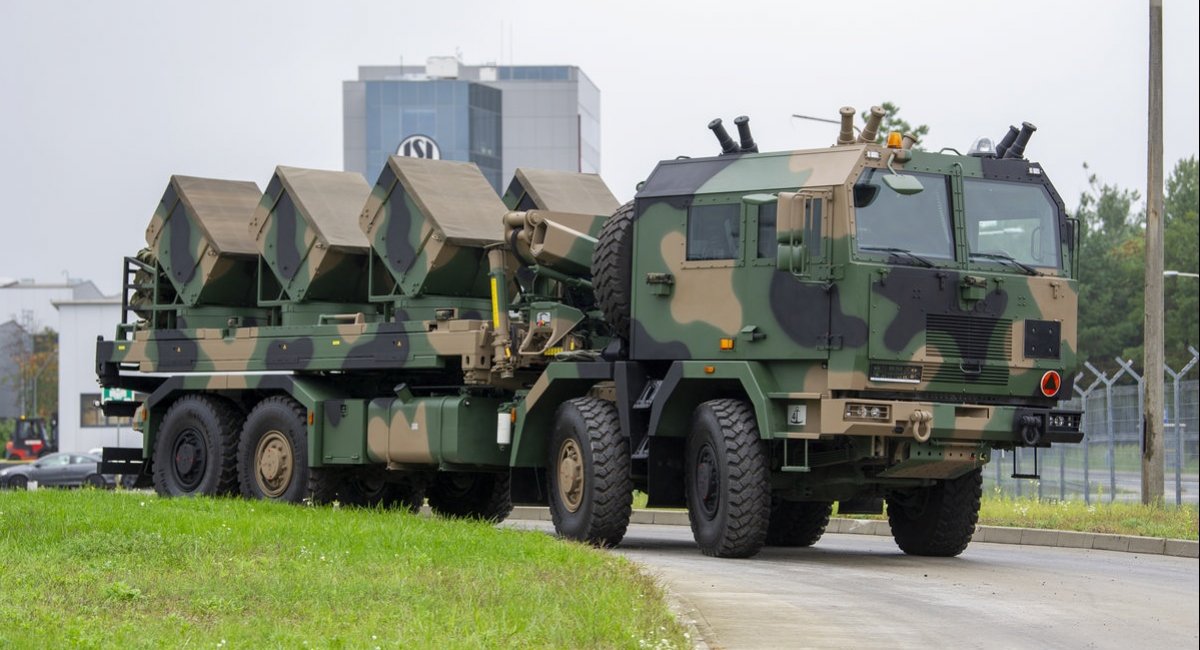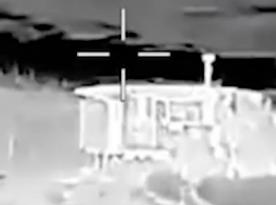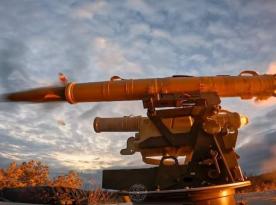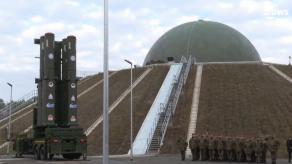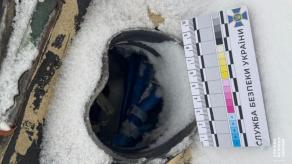Remote minelaying systems are an urgent need on the frontline, a Ukrainian Armed Forces soldier told Defense Express, adding that using these systems could greatly increase the effectiveness of Ukraine's defensive operations by offering double the lethality of defense lines against russian assaults.
The insight comes from an experienced UAF military serviceman Andrii Shyshuk, call sign Sievier, during an interview hosted by Defense Express Chief Editor Serhii Zghurets at the Espresso TV channel. The soldier says Ukraine's remote minelayers are not completely absent but those are improvised, such as aerial drones planting landmines one by one (as in the video below) or special RAAM munitions provided by partner countries.
Read more: Unique Ukrainian Ratel S Ground Drone Is in Demand Among Troops
The Ukrainian 28th Mechanised Brigade uses a night bomber drone «Vampire» to remotely mine the road with TM-62 anti-tank mines.Same area and both times, Russians blew up on the mine there.The stupidity of orcs never ceases to amaze, but let them continue SE of… pic.twitter.com/PUdlBKyFx0— Cloooud (@GloOouD) May 16, 2024
However, these means don't provide enough density and depth of minefields to thin out the russian columns when they advance on Ukrainian positions. On the other hand, the russian army uses a whole variety of remote mine planting tools ranging from specialized Zemledeliye system to Uragan and Tornado multiple launch rocket systems equipped with special mine dispersal cluster munitions.
The remote minelayers have proved effective for the russian side, especially during Ukraine's counteroffensive in summer 2023. Now, as the russian invasion forces are trying to launch another offensive across the front, the Ukrainian Armed Forces need similar capabilities to effectively defend their lines.
Since Ukraine doesn't wield or make such systems, a potential solution is to turn to other countries for help. But even abroad, weapons of this type are rare and scarce.
Based on open data, we can highlight one possible candidate, the Polish Baobab-K self-propelled remote minelayer system which we had a brief look at about a year ago. The Baobab-K was designed by Huta Stalowa Wola, as soon as its development was completed in February 2022, the manufacturer revealed system features and specifications.
Namely: the minelayer consists of six launchers with 20 barrels each. One barrel fits 5 explosive devices, making a total of 600 remotely deployable mines is one salvo. Full discharge takes 22 minutes to fire, then reloading requires 30 minutes.
It is claimed that Baobab-K, when fully charged, can create a dense minefield 30 to 90 meters deep and 1,800 m wide, the mine planting can be done in automatic mode, and only two crew members are required to maintain the vehicle. The on-board equipment set includes a computer, a visualization terminal with a digital map, and a GPS navigation system.
However, the nuance is that even the Polish army is expected to receive its first Baobab-K systems only in 2026–2028 under a contract signed earlier. The volume of this order is only 24 vehicles which is indicative of the production rates.
A way around past the capacity limitations is to award the Polish defense industry a contract for the production of these systems and while it's in process, negotiate with the Polish military a provision of at least some older vehicles of a similar class. For example, the ISM Kroton systems or Kalina automated mine planting vehicles.
Read more: Vampire UAV: Works at Night Delivering Supplies to Allies and Bombs onto Enemies




